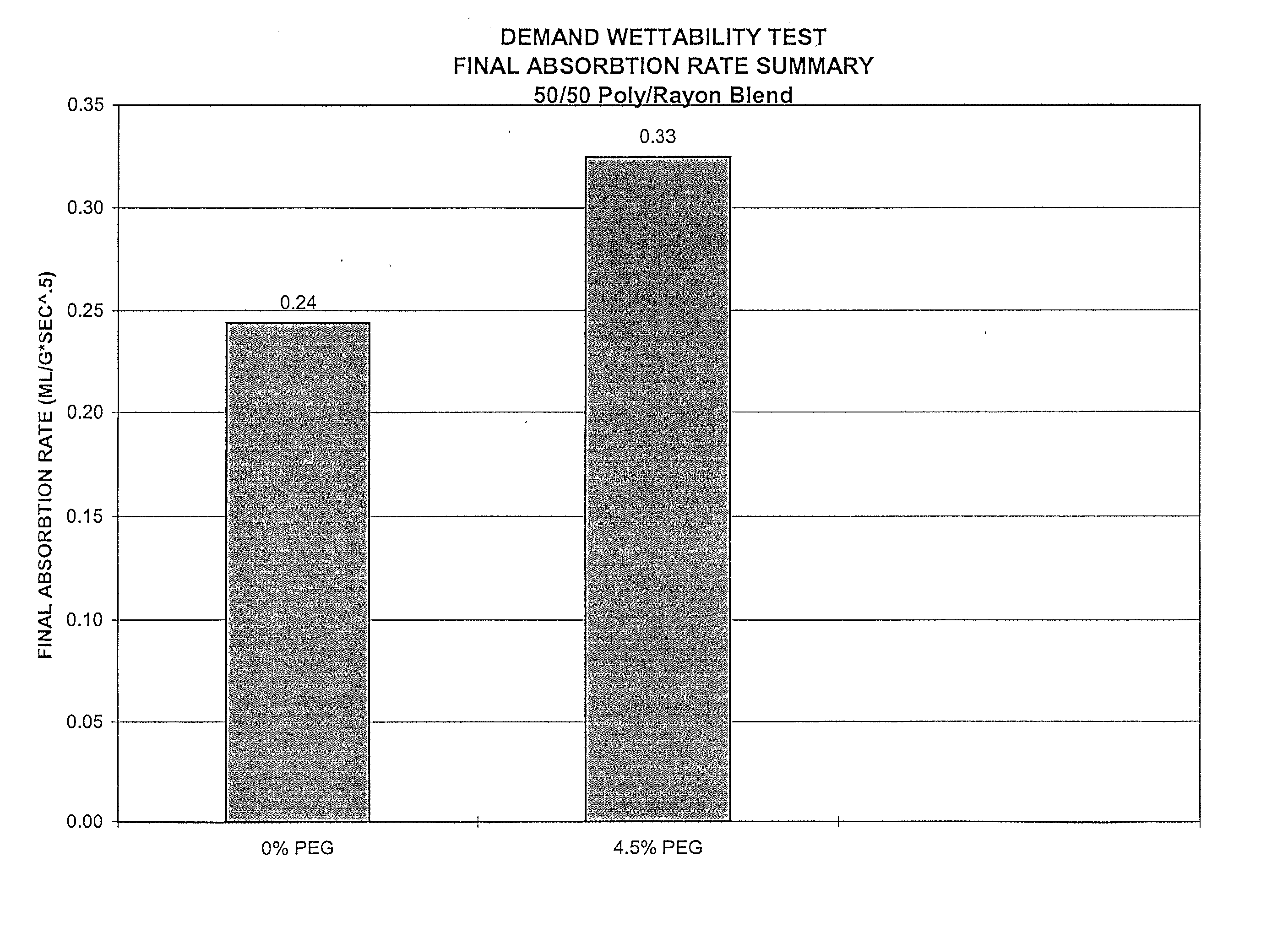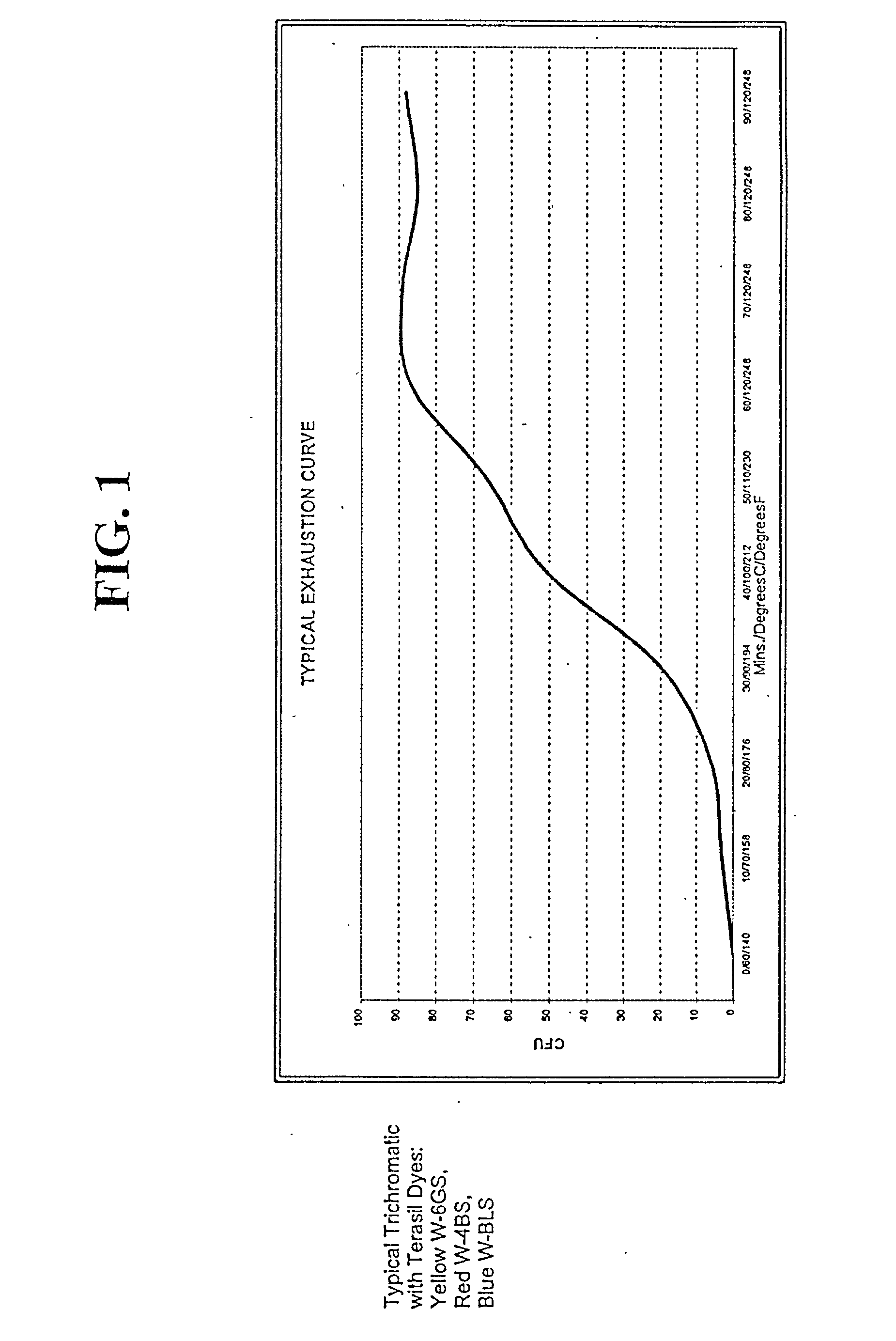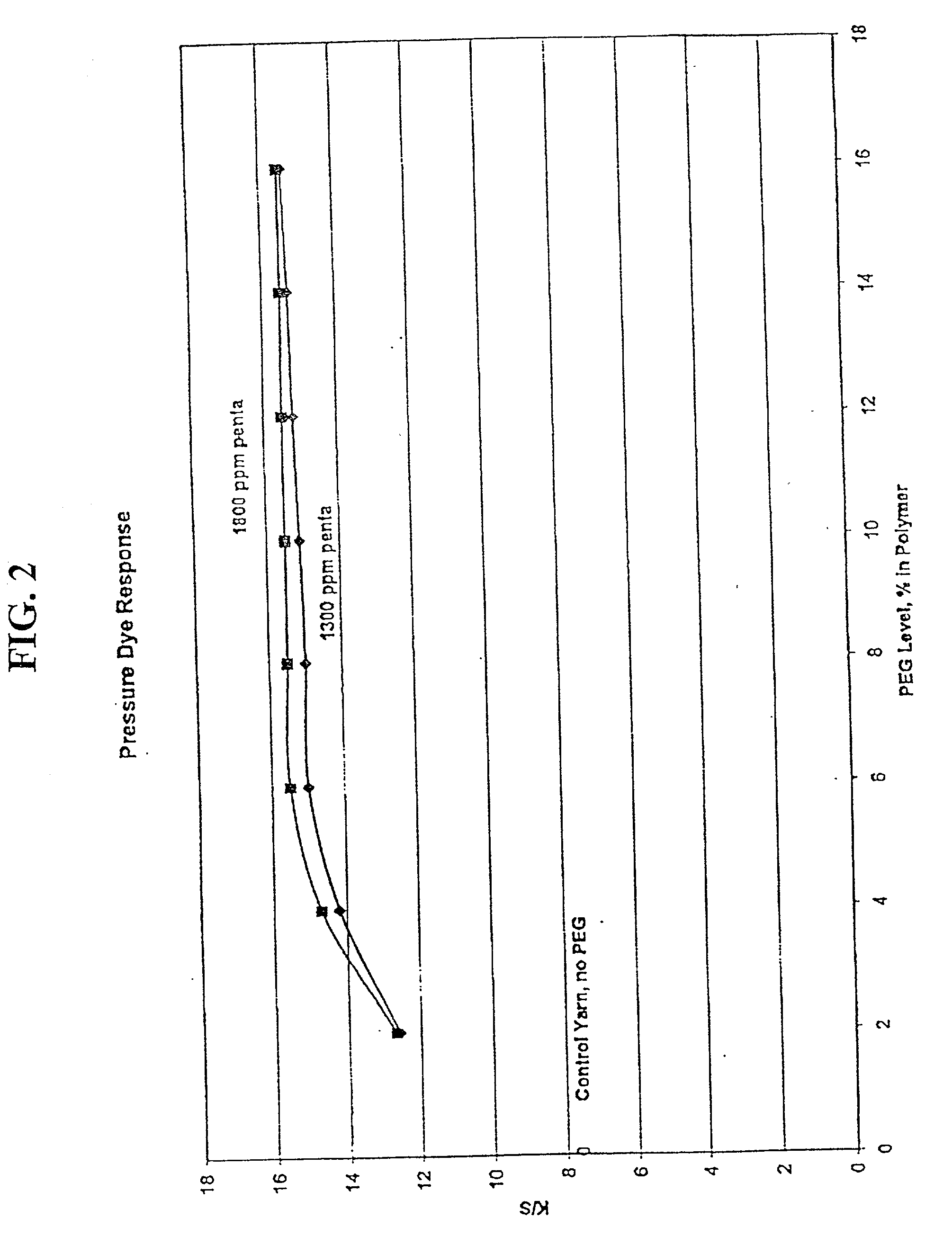Polyethylene glycol modified polyester fibers and method for making the same
a technology of polyethylene glycol and modified polyester, which is applied in the field of polyethylene glycol modified polyester fibers, can solve the problems of unfavorable consumer perception of polyester garments, treatment can produce unexpected or unwanted characteristics of modified polyester, and often consider polyester to have an unacceptable appearance for garment purposes, etc., to achieve the effect of enhancing dye uptake, high exhaustion rate, and promoting hydrophobic fiber dyeing
- Summary
- Abstract
- Description
- Claims
- Application Information
AI Technical Summary
Benefits of technology
Problems solved by technology
Method used
Image
Examples
example 1
[0087] Fill the jet dyeing machine with 100.degree. F. (38.degree. C.) water and load fabric. Set fabric turn over at about two minutes. Add scour chemicals. Ramp up 5.degree. F. (3.degree. C.) per minute to approximately 180.degree. F. (82.degree. C.) and hold for 15 minutes. Cool down 5.degree. F. (3.degree. C.) per minute to approximately 160.degree. F. (71.degree. C.). Conduct a hot running wash then drain. Fill with water at 120.degree. F. (49.degree. C.) and run five minutes. Drain. Refill with water at 120.degree. F. (49.degree. C.). Add dye bath chemicals. Adjust pH to 4.0 to 5.0 and hold ten minutes. Add pre-dissolved dyes-best results may be obtained with high energy dyes-and hold ten minutes. Ramp up 2.degree. F. (1.degree. C.) per minute to 160.degree. F. (71.degree. C.) and hold 10 minutes. Ramp up 2.degree. F. (1.degree. C.) per minute to 240.degree. F. (116.degree. C.) and hold for 30 minutes. Cool down 3.degree. F. (2.degree. C.) per minute to 160.degree. F. (71.degr...
PUM
| Property | Measurement | Unit |
|---|---|---|
| weight fraction | aaaaa | aaaaa |
| weight fraction | aaaaa | aaaaa |
| weight fraction | aaaaa | aaaaa |
Abstract
Description
Claims
Application Information
 Login to View More
Login to View More - R&D
- Intellectual Property
- Life Sciences
- Materials
- Tech Scout
- Unparalleled Data Quality
- Higher Quality Content
- 60% Fewer Hallucinations
Browse by: Latest US Patents, China's latest patents, Technical Efficacy Thesaurus, Application Domain, Technology Topic, Popular Technical Reports.
© 2025 PatSnap. All rights reserved.Legal|Privacy policy|Modern Slavery Act Transparency Statement|Sitemap|About US| Contact US: help@patsnap.com



